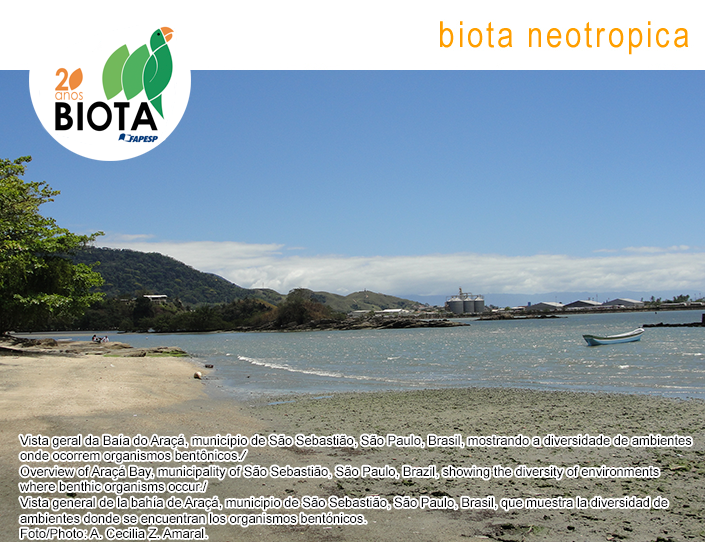THESIS
Taxonomy and geographic distribution of the Monstrilloida (Copepoda Crustacea) from the South Occidental Atlantic
Cristina de Oliveira Dias
Tese (Doutorado) Museu Nacional Universidade Federal do Rio de Janeiro, 2002
ABSTRACT
The Monstrilloida is one of the least know orders of Copepoda. Taxonomic and ecological works of the group are limited by the rarity of specimens which are captured by plankton nets as adults only. Most stages are highly modified internal parasites of benthic polychaetes and molluscs. The material examined was collected during zooplankton surveys in neritic and oceanic areas off the coast of Brazil and Argentina. Data about occurrence, distribution, morphology and ecological information is given for the eighteen monstrilloid taxa are reported herein for the South Occidental Atlantic (5-50°S). Out of the eighteen taxa, seven were identified as new (Monstrilla brasiliensis, Monstrilla careli, Monstrilla pustulata, Monstrilla satchmoi, Monstrilla bahiana, Cymbasoma rochai and Monstrillopsis fosshageni). Five others species had their distribution revised and expanded (Monstrilla grandis, Monstrilla helgolandica, Cymbasoma rigidum, Cymbasoma longispinosum and Monstrillopsis dubia). The original know distribution was confirmed for Monstrilla rugosa and Cymbasoma quadridens. Monstrillopsis gracilis was considered to be a new regional record. Three taxa were classified as genus (Monstrilla sp. 1, Monstrilla sp. 2, and Cymbasoma sp.). Monstrilla cf. reticulata (Dias, 1996) was reallocated in the new M. brasiliensis after the revision of the material. The pattern of antennular armature was described for each species in order to use this feature in future taxonomical comparisons. The fifteen species were associated with distinct conditions of temperature and salinity. The following associations of monstrilloids in the surveyed area were determined by cluster analysis: a) species associations of the Tropical Zone composed by the species Monstrilla grandis, M. rugosa, M. careli, M. brasiliensis, M. satchmoi, M. bahiana, Cymbasoma rigidum, C. longispinosum, and Monstrillopsis gracilis that occurred in the Northeastern region of Brazil, characterizing the presence of the Tropical Water; b) species association of the Subtropical Zone it included Monstrilla grandis, M. careli, M. rugosa, M. brasiliensis, M. pustulata, M. satchmoi, Cymbasoma quadridens, C. longispinosum, C. rigidum, C. rochai, Monstrillopsis dubia, M. gracilis, and M. fosshageni occurred in the coastal zone of Central and South region of Brazil, characterizing the Coastal Waters and more saline waters; and c) species association of the Transitional Zone with Monstrilla grandis and M. helgolandica, both occurred in the coasts off Argentina. It was defined as an area of mixture of Subtropical and Subantarctic Zone conditions. These is a decreasing number of species from North to South, most species are not limited to one water mass. The species recorded usually are distributed in one water mass entirely, and also in at least parts of one or two others.
Key-words: Monstrilloida, Copepoda, South Occidental Atlantic, Brazil
Orientador: Prof. Dr. Sérgio Luiz Costa Bonecker (UFRJ-Brasil).
Co-orientador: Prof. Dr. Eduardo Suárez-Morales (ECOSUR-México).
E-MAIL: crcldias@biologia.ufrj.br
Publication Dates
-
Publication in this collection
23 Oct 2006 -
Date of issue
2005

